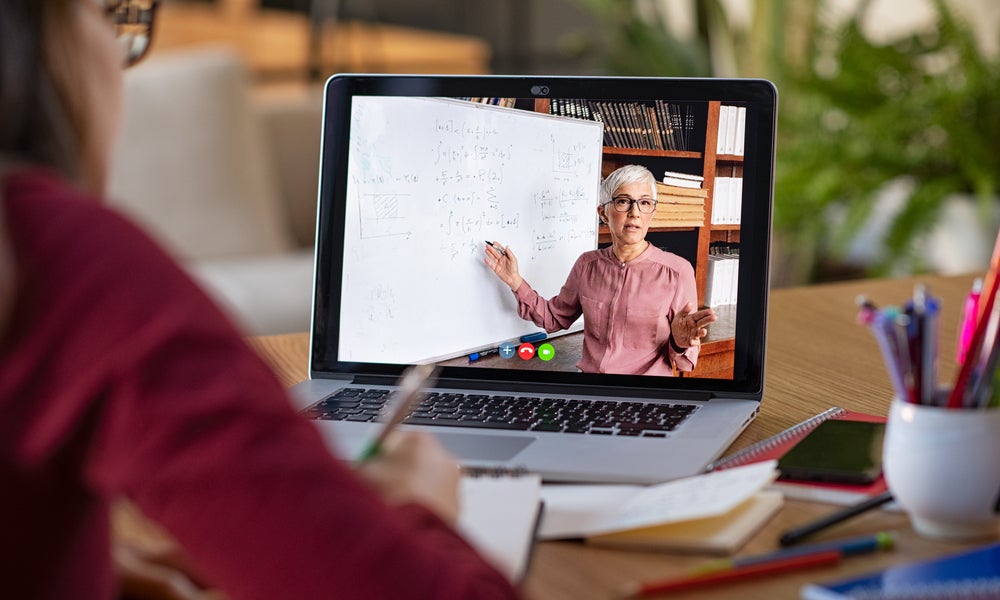Shifting online: 5 post-coronavirus lessons for business leaders
Business leaders must remember these five key leadership lessons from working through the coronavirus pandemic even after lockdown, according to experts from UNSW Business School and MIT
Technology has taken a greater role in ensuring business interactions move online through the coronavirus pandemic.
While it has enabled many businesses to stay afloat in an online world during the pandemic, it has also raised many important considerations.
A key question is whether this digital disruption is temporary, or whether it is a permanent seismic shift in the way people work.
“Everyone says this and I totally agree, things are not going to go back to the way they were,” said David Goad, Adjunct Faculty Member at AGSM @ UNSW Business School, who recently spoke as part of a webinar moderated by Professor Nick Wailes, Deputy Dean and Director AGSM @ UNSW Business School.
Technology is enabling organisations to continue to work through the crisis, according to Wailes, who observed that this technological shift also has important implications for the future.
“While technology is enabling us to do things, it raises some significant challenges and threats,” he added.
Indeed, with the Australian economy significantly impacted by the coronavirus pandemic, the new post-lockdown normal is likely to be very different from the old, one requiring new online capabilities and leadership skills.
“As Warren Buffett used to say: ‘It's only when the tide goes out that you learn who's been swimming naked’,” said Goad.
Importantly, for businesses wanting to survive or to get ahead of the situation, there are steps they can take that don't necessarily require significant investment.
While the proliferation of technology is important, this new world will require a different way of thinking about leadership and company culture, according to Kristine Dery, a research scientist at MIT Sloan School of Management who previously worked with Wailes.
Dery, who also spoke as part of the webinar, agreed with Goad that the internet is now the primary channel of communicating and working.
“There will be a different world of work post-COVID-19,” said Dery.
“It won't necessarily be the world of work we're looking at right now but it's going to be a variation of that.”
The researchers identified the following five points as important lessons for leaders who want to adapt successfully and thrive in the post-coronavirus world.

1. Identify online capacity, privacy and security issues
One of the key challenges that businesses are having to deal with is growing online demands.
“Getting connected is one thing, but for many large organisations, the digital channels they've built are largely designed for a co-located working environment and many are struggling under the load,” explained Dery.
“I think this reflects the fact that while most companies have digital processes, many are still not integrated; they are propped up by manual workarounds, and are not well set up for a 100 per cent virtual world of work – particularly at the scale they are seeing at the moment."
Related issues businesses are experiencing revolve around online security and online privacy.
For example, while Zoom has become one of the pre-eminent web conferencing tools, it has also been heavily criticised about potential security and privacy flaws.
“Zoom bombing, where people basically hack into other people's Zoom calls, has become a thing,” said Goad.
“Organisations should be giving more guidance to their workers regarding what their infrastructure should look like and perhaps they should even be helping them from a cost perspective to manage it.”
There has also been a rise in phishing emails off the back of the coronavirus pandemic, and there are certain steps businesses can take to protect themselves from these cybersecurity risks.
2. Rethink coaching and communication online
Businesses have also had to ensure adequate provision of technology and setup of networks to ensure people stay connected.
“That connectedness to each other, the customer and the organisation has presented some real challenges in terms of being able to provide the bandwidth, security, capabilities and the physical hardware that's required in a home environment for people to be able to do that,” explained Dery.
Over the past few weeks, companies such as Optus have moved their workforce online, taking them from just making it possible for their people to work remotely and deliver their normal work life from home, to creating new, permanent capabilities so their employees can work effectively.

“In the traditional working environment, work would be adapted to an environment that was already pre-established for employees,” continued Dery.
“But in a digital environment, we see that this is a much more iterative process where the work environment has to adapt to the changing nature of work.”
However, creating an experience that enables people to excel at what they do requires more than just adaptive technology; it requires responsive leadership and management.
3. Know your company’s culture and flexible working preferences
Another key point Dery discussed was the shift in “collective work habits” organisations are currently experiencing and a need for leaders to react to this shift effectively.
“Leaders have to be a lot more connected with their team, and in doing so, should be learning a lot more about people,” she said.
This means learning more about organisations' collective work habits and working closely with people to develop new ways of doing things that enable them to work more effectively together both during and post-coronavirus.
People need to gain more insights into the differences between working flexibly and working in a distributed, virtual environment.
“Habits describe how we all naturally work together to get things done and also to keep redefining and reshaping the way that we work in order to deliver value,” said Dery.
“Some companies call it culture, but I find it easier to envisage a series of collective habits that we're able to change.
“Many of these habits are subconscious and deeply ingrained in our behaviours, but if we can identify them then we can shift and alter them to behave in ways that are more suited to the new world that we're working in,” she added.
4. Avoid micromanagement; empower others instead
Managing a virtual workforce can be extremely challenging.
“It's not surprising that in the early days of this crisis, there's been a degree of moving to a more micromanaged environment and I think that's because we're not used to managing a total workforce that's virtual,” explained Dery.
“This is not flexible working, this is a completely virtual workforce.
“It requires a totally different approach to how we lead in these types of environments,” she added.

But this means that business leaders now have the opportunity to become more human in the way they manage within a virtual context.
“That’s not micromanaging everything that they do, or gathering data on everything they do,” said Dery.
“It's avoiding the pitfalls of checking up, and instead leveraging the power of checking in.”
Instead, good business leaders should think about how they can truly empower and encourage their employees to work effectively in this virtual environment.
5. Measure good leadership by the ability to teach others
Finally, Dery said it is important for businesses to start measuring leaders on their ability to teach, because in high-performing firms, every leader is a teacher.
"This means that not only do they leverage their existing bank of expertise and skills, but they are constantly learning new digital skills. These leaders are assessed on their ability to effectively impart that learning to their people," she said.
"This ability to teach is a major contributing factor in developing workforces that have the level of digital fitness required for success."
While it is still early days, a lot of businesses are already doubling down on their investments in terms of AI, robotic process automation and business intelligence to help support and enable effective digital processes and ways of working.
“[But] people will have to experiment and find out what's best for them and best for the organisation," added Goad.
And it will be the organisations that are learning from this opportunity – gathering data, better understanding their technology and really rethinking their processes – that will truly come out of this with an employee experience fit for a digital world.
A recording of the AGSM Webinar Leading Through Times of Crisis - The Impact of Technology in a COVID-19 World is available online. AGSM@UNSW Business School has launched a new suite of virtual learning short courses to help equip leaders to adapt and lead with agility. For more information visit the AGSM@UNSW Business School LinkedIn feed or the AGSM Virtual Learning website.
